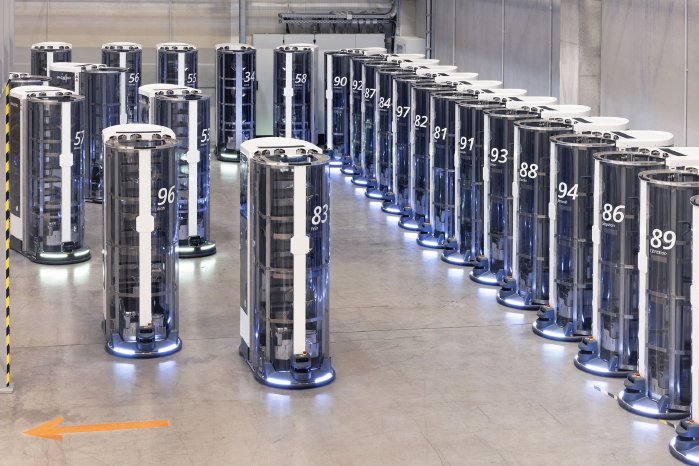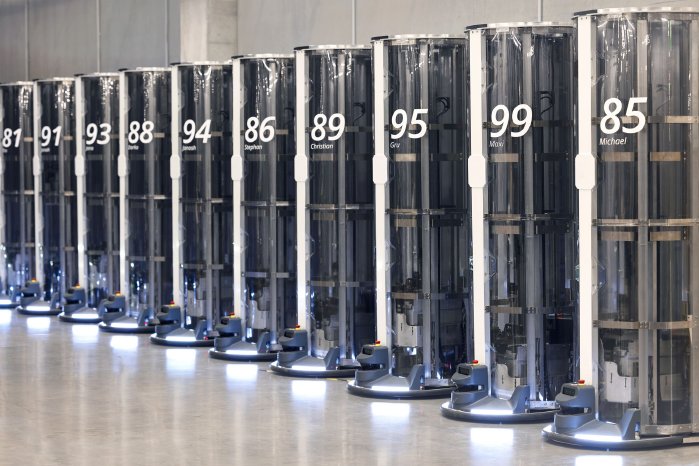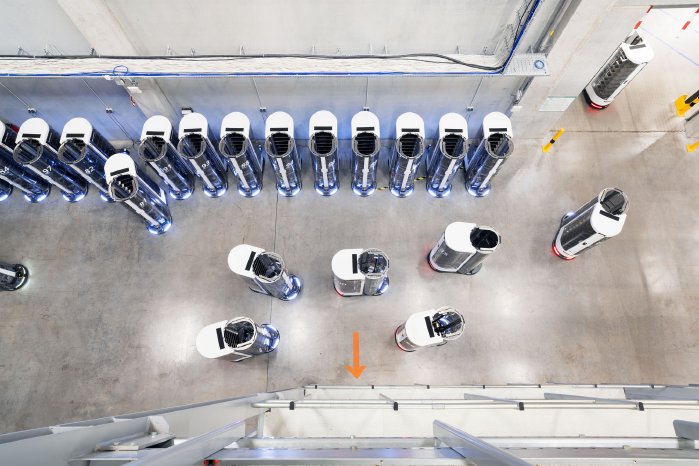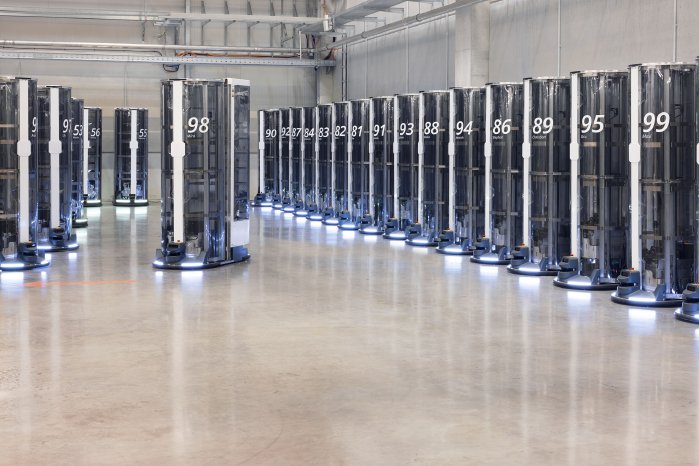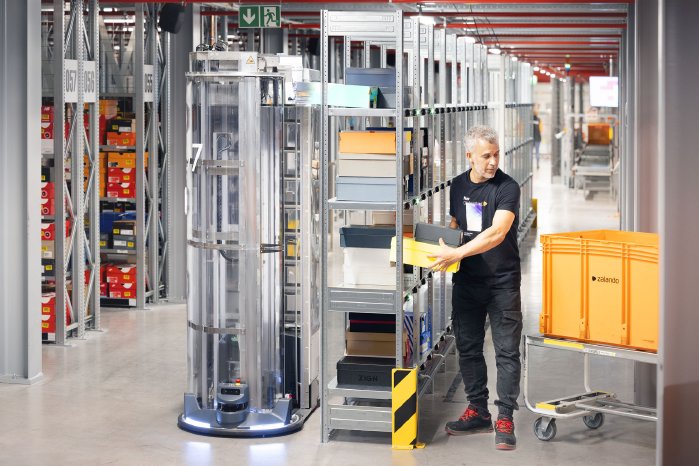- Largest single order for the advanced robotics specialist from Munich, founded in 2014.
- In addition to Lahr, the picking processes at the Zalando locations in Erfurt and Verona (Italy) will be automated with TORU in the future.
- The focus is on increasing efficiency, ergonomics and further improving delivery quality.
- TORU picks shoe boxes completely autonomously, supports and relieves the employees.
Magazino last received a significant order from Zalando for the Lahr site in the fall of 2021. The successful suitability test will now be followed by the rollout of an additional 29 robots at Zalando's logistics centers in Erfurt and Verona (Italy). All robots will be delivered by the end of September 2022, with final integration scheduled for the first quarter of 2023.
Marcus Daute, Director of Logistics Product & Strategy at Zalando SE, says: "Magazino has already proven that its mobile picking robots greatly support our logistics processes in Lahr. They are in use six days a week in 3-shift operation and thus cover the base load in shoe box picking. The current expansion of the robot fleet not only relieves our colleagues but also ensures that we can continue to offer our customers the best possible service in the future.”
Frederik Brantner, CEO and founder of Magazino, says: "In less than a year, Zalando has now decided to expand further after Lahr. For Magazino, this step marks the largest single order in our still quite young company history. We are proud of this and look forward to supporting Zalando's further development with our advanced robotics solutions in close cooperation."
Zalando launched an initial project with two TORU robots from Magazino in 2018. With the expansion to a total of 57 autonomous "colleagues" now, the largest fleet of TORU robots so far will soon be in operation in the logistics of the online platform. Zalando benefits from accelerated throughput times, a constant 24/7 flow of goods and error minimization, even amid a heavy order load. Moreover, the fashion and lifestyle specialist, whose DNA includes logistics, is highly flexible. This is because the robots can be redistributed between the sites in the future as needed.
